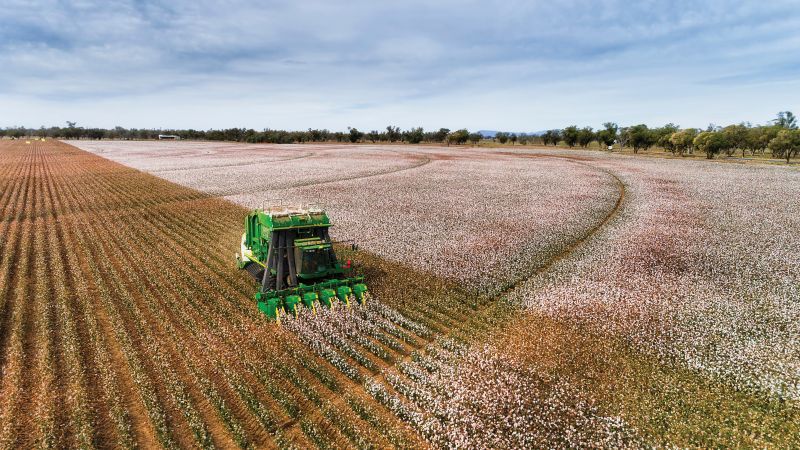Cleveland: Market Still Looking for Its Top
The cotton bull continues to feed on the record string of export sales and the ever more bullish on-call sales predicament facing the mills.
Too, the old bull is not giving up his almost daily run above 79 cents. Yet, the market is now demonstrating a tendency to sell off and lose its daily gains as the trading day ends. Like a worn out athletic team, the bull is just having difficulty keeping up at the end of the day.
Let’s not throw his hat in the ring just yet, as the on-call sales coupled with the speculative long position can still push the market to 80-plus cents. However, the days are now numbered.
Two scenarios are in place. Which one will come to fruition? Wake me up in six weeks and tell me July pressured 85 cents, and we can talk about on-call sales and speculators holding their positions. Conversely, wake me up in six weeks and tell me the July contract is having trouble holding 75 cents, and we can talk about the speculative funds letting the mills out of the market.
The weak at heart seem to think the bull is dead. The faint of heart continue to bet on the mills being squeezed. Yet, as commented the past two weeks, the market is really doing nothing more than trying to pick its top.
We are close, but as long as July can trade above 79 cents on a near daily basis, as it has, I can’t call it over. It is likely that new crop has, in fact, has found its top.
Export sales for both marketing years exploded to 539,500 RB. That’s over 3 million bales in sales in only six weeks. Marketing year 2016-17 export sales for the week ending March 16 were a net of 328.200 RB of upland and 10,000 RB of Pima. China was the primary buyer taking 98,100 RB, with Vietnam, Turkey and Indonesia as other primary buyers.
It was also noteworthy that India was in the market for 27,300 RB.
It is the large sales to China and continued sales to India that, coupled with a very strong demand for U.S. styles, will lead to marketing year exports well in excess of the current USDA estimate of 13.2 million bales. Shipments totaled 379,700 RB of upland and 14,700 RB of Pima.
I continue to mention China, the country that was not supposed to import much U.S. cotton. Most failed to grasp the volume of imported cotton China needs to mix with its current reserve offerings just to spin a quality yarn. Like wine and coffee, cotton “tends” to deteriorate over time. Current Chinese offerings are basically 2011, 2012 and 2013 crop cottons – low quality crops to begin with, but now facing severe age deterioration. Thus, in that sense, the cotton market is taking a lesson from the marketing strategy of vineyard products – again misunderstood by a few.
Textile mills added to the imbalance of on-call sales versus on-call purchases this past week, as on-call sales for July increased over 74,000 bales and the ratio of sales to purchases maintained its 15-16:1 ratio in favor of contracts needed to be bought versus contracts needing to be sold.
The long awaited USDA March 31 Cotton Plantings Intentions Report is just a few days away. USDA’s initial estimate of 11.5 million acres, out early, outpaced earlier reports, but the guess now is that 2017 U.S. cotton plantings will be between 12.0 and 12.3 million acres. I will keep to the high side of that narrow range. Remember, the USDA report will be based on conditions as of March 1, thus it could be below actual plantings, especially if the December futures contract can hold the 74-75 cent level for another month.
Growers have asked why use put options this year, especially since the new crop December is trading in the upper one-third of its historical price range. I understand their concern of wanting to lay out such an expensive expenditure with the market at 75 cents.
This is one of those rare years that put options may well be out of the limelight. Again, the issue is not the use of puts, but rather using puts with the market in the upper one-third of the historical price range.
The prudent grower would likely be better advised to fix the price via a cash forward contract. For the grower well versed in marketing strategies, he may be best advised to hedge directly in the futures market.
I am a risk averse person, thus, historically, I do like to use put options. Yet, I could easily beg off this year.
Give a gift of cotton today.









